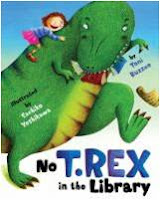 Learning: Is there an app for that?
Learning: Is there an app for that?
by Cynthia Chiong & Carly Shuler
November 2010A mobile media revolution that is changing the lives of adults, and now children of all ages, is under way across the globe. This report focuses on how new forms of digital media are influencing very young children and their families in the United States and how we can deploy smart mobile devices and applications-apps, for short-in particular, to help advance their education. It does so in three parts: Part One discusses new trends in smart mobile devices, specifically the pass-back effect, which is when an adult passes his or her own device to a child.
Part Two presents the results of three new studies that were undertaken to explore the feasibility and effectiveness of using apps to promote learning among preschool- and early-elementary-aged children. Though designed to complement one another, each study approached mobile learning from a different angle.
Part Three discusses the implications these findings have for industry, education, and research.
Commissioned by the Joan Ganz Cooney Center at Sesame Workshop and PBS KIDS Raising Readers, through an initiative funded by a Ready to Learn grant and the United States Department of Education in cooperation with the Corporation for Public Broadcasting.
Key FindingsTogether, the three studies provide insight into how children are using and learning from smart mobile devices and apps. Here we present the findings according to our focal research questions:
• How much access do young children have to smart mobile devices?
The pass-back effect appears to be a real interactive phenomenon. Young children have access to smart mobile devices, but their access is often limited.
• What do young children do with smart mobile devices?
Kids say that they mainly play games with smart mobile devices, while parents report that their kids use these devices for a variety of activities.
• To what extent do young children like smartmobile devices?
They like smart mobile devices, particularly the iPhone/iPod touch.• How adept are young children at using smart mobile devices?
Most children were able to use the device on their own without any trouble. Other children needed a little help, but only at the beginning. They quickly became adept users.
• To what extent do young children learn from apps?
There is evidence that kids can learn from apps. The Martha Speaks application used in the Learning Study shows promise for vocabulary learning, especially for older children. The Super Why app may be an effective way to promote literacy skills, especially for younger children.
• How can apps successfully sustain young children’s interest and learning?
Interest in the apps can be fleeting, but factors such as developmentally appropriate and fresh content, shortened wait times, humorous activities, incentives, goals, and parental involvement can help to sustain interest.
• What is the role of parents in the mobile media revolution?
All three studies suggest that parents play important roles in shaping the quality of their children’s experiences with mobile devices. When it comes to smart mobile devices, many parents do not yet view them as potential learning tools — especially when compared to other technologies like computers and the Internet — and thus restrict how their children use them.
Implications for industry
Design principle No. 1:
Create apps that are developmentally appropriate.
• Focus content narrowly within a developmental age range.
• Design content to be relevant to what children are already learning.
• Consider children’s evolving motor skills.
• Engage children (and adults!) by making them laugh… but not too much. Balance engagement and learning.Design principle No. 2:
Create apps that sustain children’s interest and learning.
• Design for shorter playtimes.
• Provide goals and incentives: Keep them coming back.
• Give kids the option to personalize.
• Involve parents.
READ MORE !


























